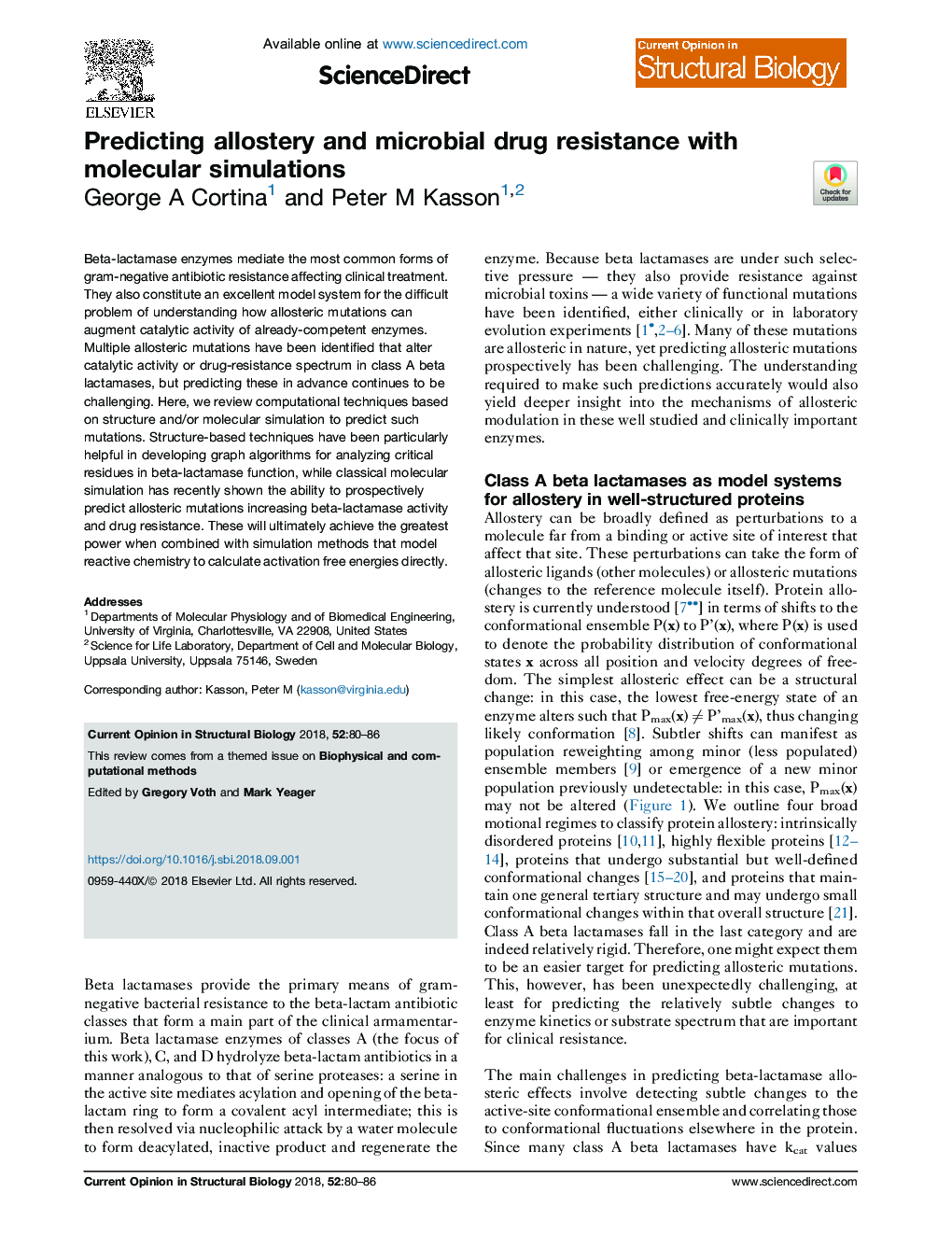| Article ID | Journal | Published Year | Pages | File Type |
|---|---|---|---|---|
| 11007565 | Current Opinion in Structural Biology | 2018 | 7 Pages |
Abstract
Beta-lactamase enzymes mediate the most common forms of gram-negative antibiotic resistance affecting clinical treatment. They also constitute an excellent model system for the difficult problem of understanding how allosteric mutations can augment catalytic activity of already-competent enzymes. Multiple allosteric mutations have been identified that alter catalytic activity or drug-resistance spectrum in class A beta lactamases, but predicting these in advance continues to be challenging. Here, we review computational techniques based on structure and/or molecular simulation to predict such mutations. Structure-based techniques have been particularly helpful in developing graph algorithms for analyzing critical residues in beta-lactamase function, while classical molecular simulation has recently shown the ability to prospectively predict allosteric mutations increasing beta-lactamase activity and drug resistance. These will ultimately achieve the greatest power when combined with simulation methods that model reactive chemistry to calculate activation free energies directly.
Related Topics
Life Sciences
Biochemistry, Genetics and Molecular Biology
Biochemistry
Authors
George A Cortina, Peter M Kasson,
